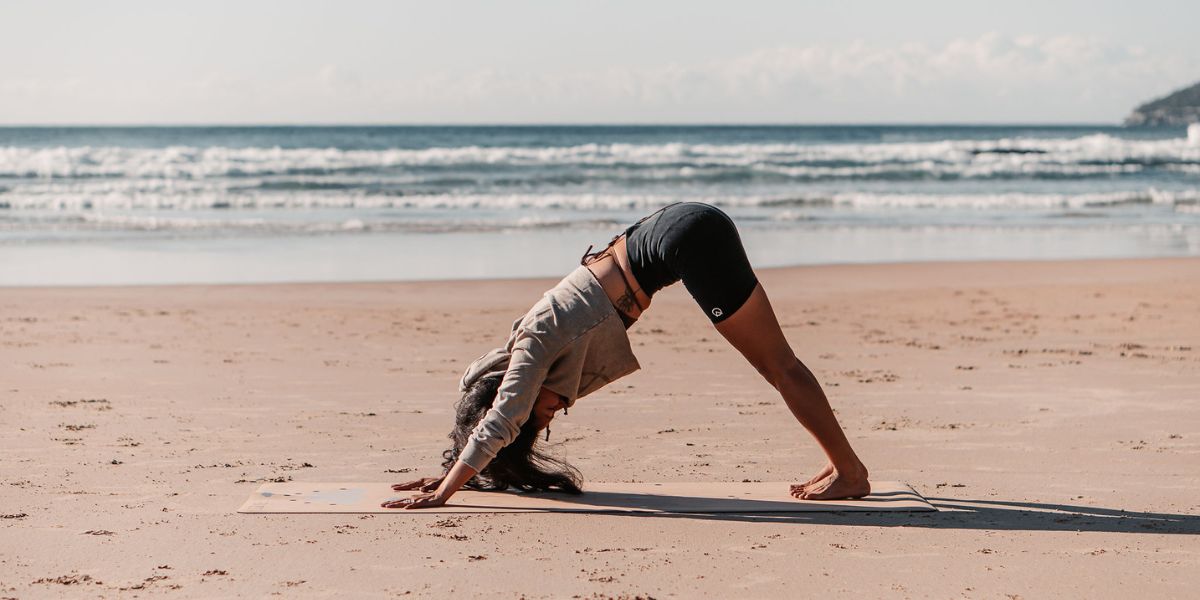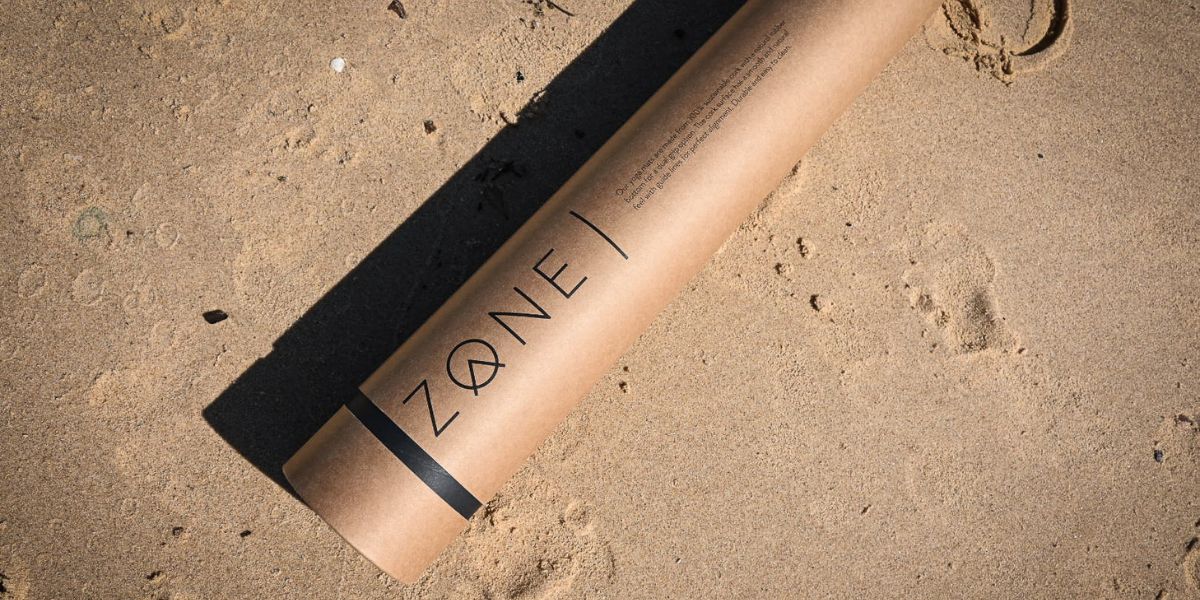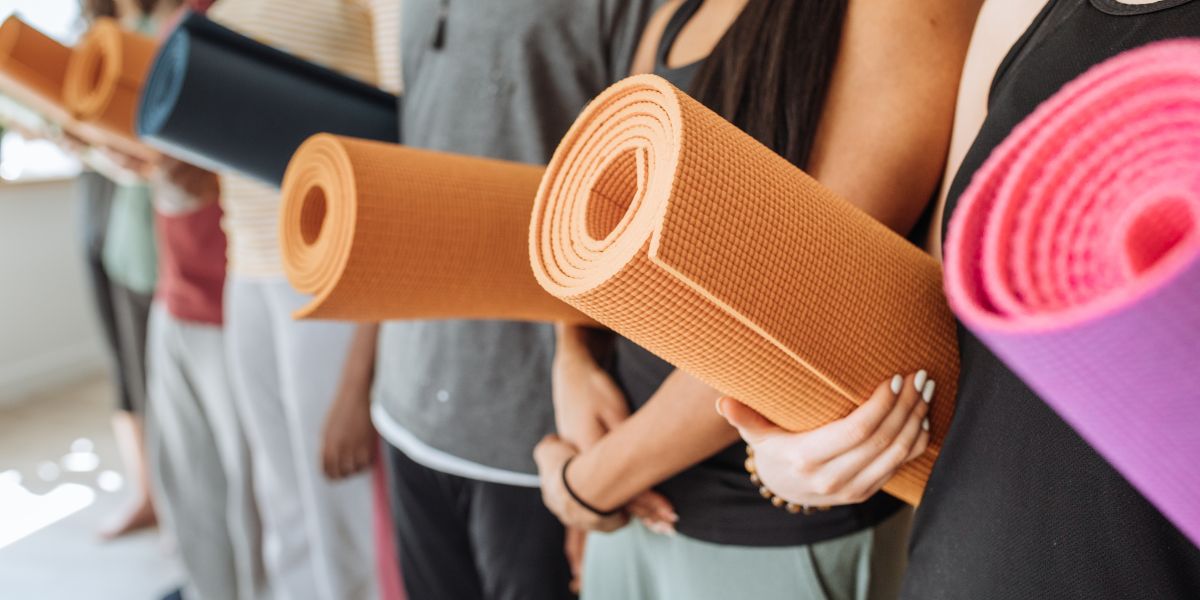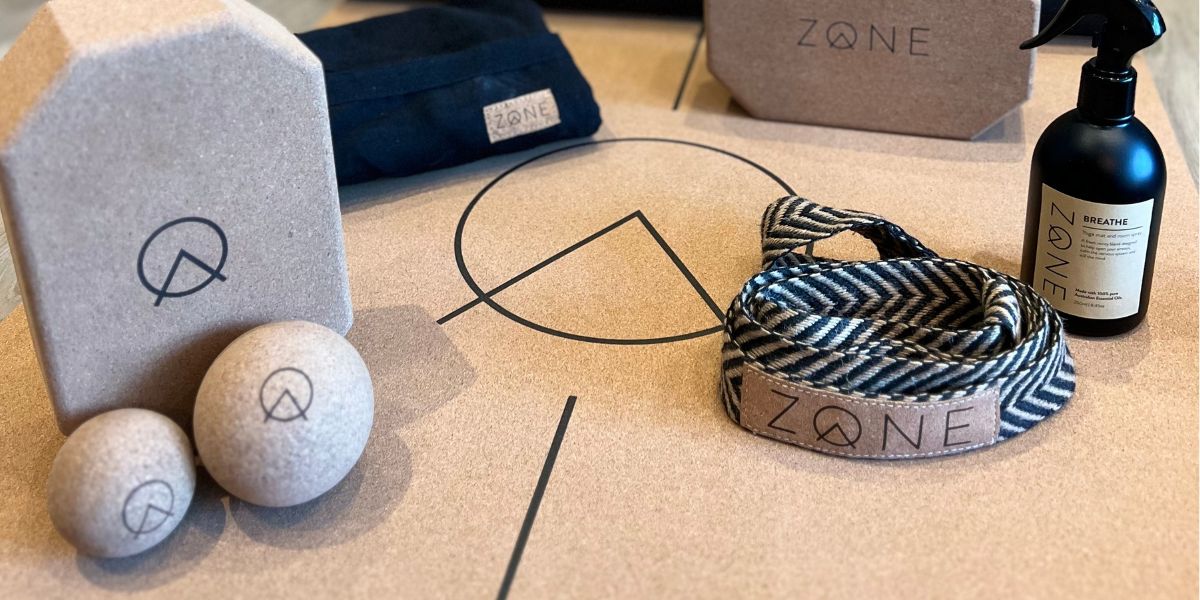In the world of yoga, mindfulness extends beyond the mat and into our daily choices, including how we shop for yoga gear. As yogis, we inherently prioritise sustainability. Ahimsa - one of the many principles of yoga, encourages individuals to live in a way that does not harm the Earth or its inhabitants. It promotes mindful consumption, ethical treatment of animals, and care for the environment, all of which are key components of sustainable living. By practicing Ahimsa, one strives to reduce their carbon footprint, avoid harm to the environment, and make choices that support the welfare and preservation of natural resources for future generations.
The demand for eco-friendly yoga mats and sustainable yoga props has surged in the past decade. This is a good thing right? It is. However, it also opens the door for misconception and clever marketing that pitches toxic products as sustainable. As an eco-friendly yoga brand that prides itself on sourcing the most sustainable, low impact materials as possible, this is concerning.
At ZONE we take great lengths to ensure we're using the most sustainable materials available to ensure an eco friendly yoga practice. We realise it can be confusing for yogis to decipher between clever marketing and what is a truly sustainable material. In this guide, we'll highlight which materials are in fact sustainable and what to avoid when shopping for eco-friendly yoga gear.

First, Let's Go Back To The Origins Of Yoga Mats & Props
In its early days, yoga was primarily practiced on natural surfaces such as grass, animal skins, or simply on the ground. However, as yoga evolved and spread to different parts of the world, practitioners began to seek more comfortable and supportive surfaces to enhance their practice.
The modern yoga mat as we know it today was not introduced until the 20th century. In the early 1900s, the renowned yoga teacher Tirumalai Krishnamacharya, often referred to as the "father of modern yoga," began teaching yoga to a wider audience in India. To provide his students with better support and stability during their practice, Krishnamacharya experimented with various materials for yoga mats, including cotton rugs and blankets. Eventually, he collaborated with local artisans to develop the first rudimentary yoga mats made from woven cotton or jute fibers.
The first commercial yoga mat is credited to Angela Farmer, a yoga teacher from London, UK, who created it in the early 1980s. Farmer's yoga mat was made from a simple piece of carpet underlay, which she cut to size and used to provide cushioning and traction during her yoga practice. This improvised mat laid the groundwork for the development of modern yoga mats, which have since evolved to include a variety of materials and features designed to enhance comfort, stability, and sustainability.
The introduction of yoga props, such as yoga blocks, straps, yoga wheels and bolsters, also emerged during this period to enhance the yoga practice and accommodate practitioners of all levels. These props were initially used by B.K.S. Iyengar, one of the most prominent yoga teachers of our time, to help yoga practitioners achieve proper alignment and deepen their poses. Over time, yoga props have become integral tools in yoga studios worldwide, facilitating safer and more accessible practice for practitioners of all abilities throughout their yoga journey.

What Makes A Material Sustainable?
How do we know our eco yoga mats are sustainable? What makes a material sustainable?Sustainability in materials refers to their ability to meet present needs without compromising the ability of future generations to meet their own needs. Sustainable materials are characterised by several key factors:
Renewable Resources:
Sustainable materials are often derived from renewable resources that can be replenished naturally over time, such as cork, bamboo, hemp, or organic cotton. These resources are harvested in a way that ensures their continued availability for future generations.

Low Environmental Impact:
Sustainable materials are produced using processes that minimise environmental impact, such as reducing energy consumption, water usage, and greenhouse gas emissions. This includes using non-toxic chemicals and dyes as well as and minimising waste generation.
Ethical Sourcing:
Sustainable materials are sourced ethically, ensuring fair labour practices, respect for human rights, and equitable treatment of workers throughout the supply chain. This includes considerations such as living wage and safe working conditions.
Durability and Longevity:
Sustainable materials are often chosen for their durability and longevity, reducing the need for frequent replacements and minimising waste. Durable materials like natural rubber, hemp, jute and cork, contribute to a more circular economy by extending the lifespan of products and reducing overall resource consumption.
Plastic-Free Packaging:
When shopping for eco-friendly yoga equipment, it makes sense to pay attention to the packaging used. Is your yoga mat wrapped in plastic packaging? Or it is packed in biodegradable packaging like kraft paper or cardboard? Is the packaging minimal whilst still offering protection for your product? Look for brands that put the effort into plastic free packaging solutions. Materials like recycled cardboard and cornstarch mailers are a much better options vs virgin plastics.

Biodegradability or Recyclability:
Sustainable materials are designed to be either biodegradable, breaking down naturally at the end of their life cycle, or recyclable, allowing them to be repurposed or transformed into new materials. This reduces the burden on landfills and promotes a more circular approach to resource management. In addition to plastic free packaging, choosing products with compostable packaging (if you have a working compost) helps to divert waste from landfill.
What Materials Are the Most Sustainable When It Comes To Eco Friendly Yoga Gear?
If an eco friendly yoga practice is your goal, then there are several sustainable alternatives to keep in mind when shopping for new yoga gear including materials like sustainable cork, natural rubber, hemp and jute.
Natural Rubber
Pros: Yoga mats made from natural rubber are biodegradable, renewable, and sustainably sourced from rubber trees. Natural rubber mats provide excellent grip and cushioning while minimising environmental impact.
Cons: Individuals with latex allergies should avoid natural rubber mats due to latex proteins present in the material. Rubber mats are extra grippy which is great for most poses, but can be quite sticky on poses like hanumanasana. Natural rubber mats may also have a strong initial odour that dissipates over time. Additionally, natural rubber mats tend to be heavier and denser than mats made from other materials, which may be less convenient for transportation.
Cork
Pros: Cork is one of the most renewable and practical of natural materials and has a wide range of uses. Cork products are made from the bark of cork oak trees, which naturally regenerate after harvesting and no cork tree is ever cut down.
Cork yoga mats are often combined with natural rubber resulting in a practical, non toxic yoga mat for your daily practice. Cork yoga blocks and cork massage balls are made from compressed cork granules which can be moulded into all kinds of shapes and sizes. Cork makes an excellent choice when searching for sustainable yoga blocks and cork massage balls due to its natural sturdiness. For example a cork yoga block won't collapse or compress under weight like foam yoga blocks do, making them a more stable [and safer] surface to practice on.
Sustainable cork has a beautiful natural feel and unlike foam or PVC yoga mats, its grip increases under sweaty conditions, humid environments or during hot yoga. Cork is biodegradable, antimicrobial, and provides a naturally firm yet supportive surface for a regular practice.

Cons: Cork can feel a bit slippery if you have very dry hands. However, this can be remedied by spritzing your cork yoga mat with water or an essential oil spray before practice which activates a natural waxy substance called suberin and increases the grip of the mat. Once you start generating heat in your practice, the cork surface naturally increases in grip. Cork is also heavier and more dense than foam, so it's not the most lightweight option.
Hemp & Jute
Pros: Hemp and jute are sustainable and fast-growing crops that require minimal water and pesticides to cultivate. Yoga mats and yoga straps made from hemp fabric or jute fibers are durable, antimicrobial, and biodegradable, making them an eco-friendly choice.
Yoga straps, bolsters and yoga tote bags made from hemp fabric or jute have high tensile strength and get softer and more comfortable with use which makes them an excellent choice when shopping for sustainable yoga accessories like yoga bags, yoga straps and restorative yoga props.
Cons: Hemp and jute yoga mats alone can feel quite rough or slippery and lack cushioning however, when combined with rubber, they make an excellent eco yoga mat.

What Materials Should You Avoid When Shopping For A New Yoga Mat and Sustainable Yoga Accessories?
There are numerous eco friendly brands that may tick the box on an ethical supply chain and offer carbon neutral shipping and other carbon offset programs, but fall short when it comes to using eco friendly materials. Here are some red flags to watch out for when shopping for non-toxic yoga mats and props.
1) Avoid PU (Polyurethane)
Polyurethane (PU) is a petroleum-based plastic commonly found in yoga mats, touted by some brands as eco-friendly. However, PU mats can emit harmful gases over time and do not biodegrade naturally. Additionally, due to its flammability, toxic fire retardants are often added to PU mats, raising concerns about their safety to your health as well as environmental impact.
2) Avoid PVC (Poly Vinyl Chloride)
PVC, a longstanding and prevalent material in yoga mats, poses significant health and environmental risks. Its toxic nature, including carcinogenic properties when inhaled during yoga practice, raises concerns. Additionally, the manufacturing process emits harmful dioxins, contributing to environmental degradation. According to Greenpeace's 2014 report, PVC stands out as the most environmentally harmful plastic throughout its lifecycle so if you're looking to minimise you carbon footprint, stay away from PVC.

3) Avoid PER (Poly Environmental Resin)
While PER may sound environmentally friendly, it's important to note that it's primarily composed of PVC, albeit with some additional materials that make it slightly less toxic. However, compared to PVC, which is known for its harmful environmental impact, PER may seem like a better alternative. Yet, when weighed against other materials, PER still falls short as a sustainable option.
4) Avoid TPE (Thermo Plastic Elastomer)
While TPE (Thermoplastic Elastomer) is considered marginally better than conventional PVC yoga mats due to its blend of oil-derived plastic and natural rubber, it still presents significant environmental concerns. Despite its composition being somewhat more eco-friendly, TPE mats are not easily biodegradable and still contain plastics, contributing to pollution and environmental degradation.

5) Avoid Microfibre (Polyester)
Microfiber yoga mats, made from synthetic fabrics such as polyester, have a significant environmental impact. Polyester production involves harmful chemicals and energy consumption. When washed, microfibers shed tiny plastic particles that harm marine life and ecosystems, as they are too small to be filtered out by wastewater treatment plants. These microfibers accumulate in water systems, where marine animals ingest them, leading to internal injuries and even death. Additionally, microfibers attract and absorb pollutants from the environment, posing further risks to marine life.
6) Recycled Materials
Some yoga mats and props are made from recycled materials such as recycled rubber, plastic bottles (PET), or recycled foam. Using recycled materials helps divert waste from landfills and reduces the need for virgin resources however, they still contain toxins and pose a threat to human health.
The Verdict? What Are The Most Sustainable Materials For Yoga Props and Mats?
Opt For A Natural Yoga Mat
Cork combined with natural rubber is a great combination when considering performance and sustainability. A natural cork mat has a beautiful feel under hand and foot. Alternatively, a pure natural rubber yoga mat or one combined with jute and hemp is also a sustainable and durable option.
Eco-Friendly Yoga Blocks
The pros of cork yoga blocks far outweigh any foam options from a performance and sustainability standpoint. A cork yoga block, due to it's density and natural grip is a great choice for any yoga practitioner.
Eco Massage Balls
Again cork is the go-to material for massage balls over rubber. Cork has a natural feel and optimal cushioning and can be shaped into various sizes and shapes. Cork massage balls are a great massage tool for at home use or whilst travelling to quickly relieve tired or tense muscles.
Yoga straps, Bolsters & Yoga Tote Bags
Hemp and jute are sustainable fabrics and fantastic choices due to their tensile strength and durability and make for excellent choices when shopping for yoga straps, yoga mat bags and restorative yoga props such as organic yoga bolsters and meditation cushions.

As conscious consumers, we have a responsibility to make choices that align with our values and beliefs. By prioritising the use of natural materials over toxic synthetic options in the yoga industry, we are not only protecting the environment but also safeguarding our own health. It is important to support eco-friendly yoga brands that prioritise sustainability and ethical practices in their production processes. By choosing sustainable yoga gear, we are contributing to the future of the yoga industry and advocating for a healthier planet for generations to come.

If you're shopping for sustainable yoga props and eco-friendly yoga equipment, you've come to the right place.
Our cork yoga mats combine cork leather with natural rubber, giving you one mat, with a dual grip option. The two layers are heat laminated together and contain no toxic chemicals or harsh chemicals. Shop our wide range of cork yoga mats featuring beautiful symbolic artwork.
Our sustainable yoga blocks are made from cork. They provide a solid and stable surface for you to practice on. Shop our cork yoga block duo and save! Transform tension into tranquility with our cork massage balls. This portable set, featuring two distinct sizes, is your partner in releasing stress and revitalising muscles wherever life takes you.
Complete your eco-friendly ensemble with our jute yoga straps , robust hemp tote bags as well as Australian hemp clothing. Our yoga straps invite greater reach and depth in your poses while the spacious hemp yoga tote bags await to carry all of your yoga essentials.
Shop our ZONE by Lydia Eco-Friendly yoga gear today!


























